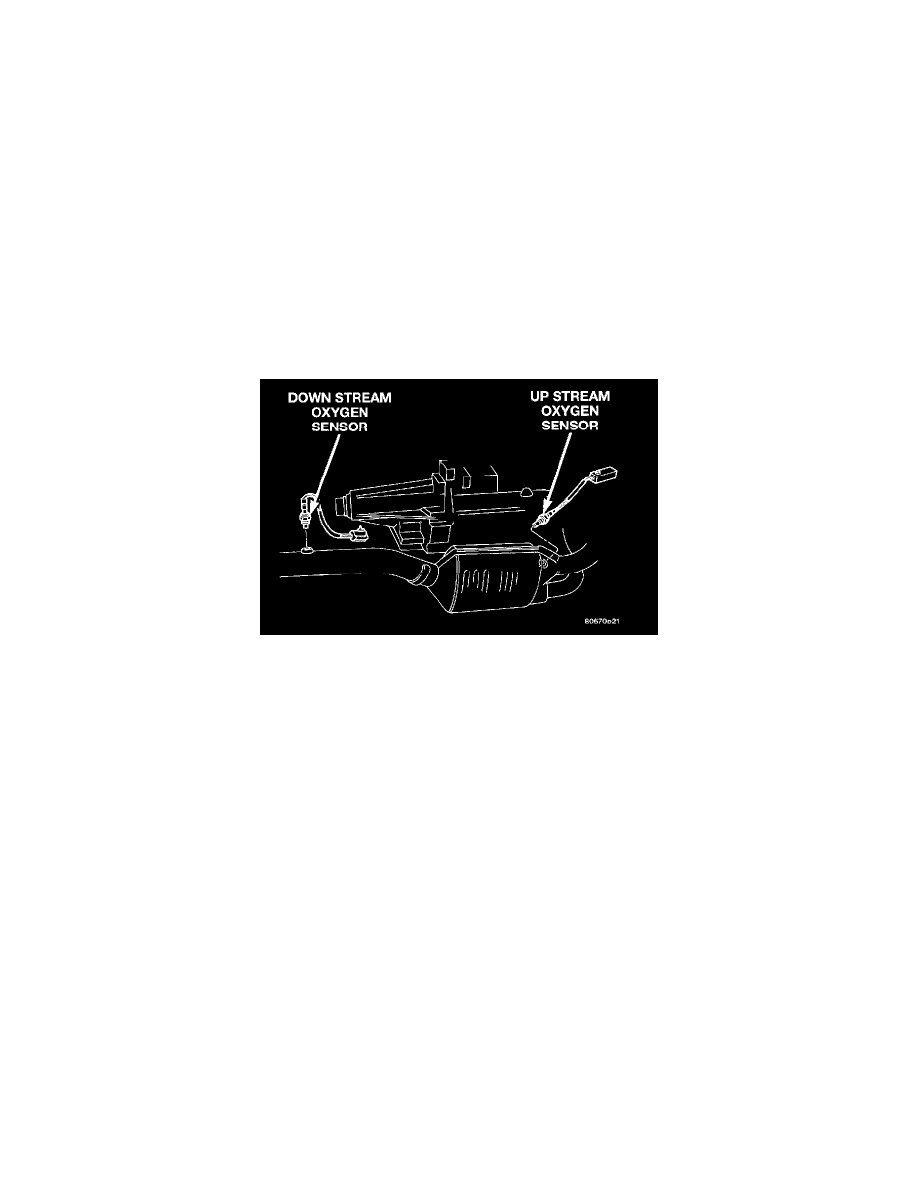RAM 1500 Truck 4WD V8-5.9L VIN Z LDC (1999)

Oxygen Sensor: Description and Operation
OXYGEN SENSOR (O2S)-PCM INPUT
Two heated O2S sensors are used (upstream and downstream). The sensors produce voltages from 0 to 1 volt, depending upon the oxygen content
of the exhaust gas in the exhaust manifold. When a large amount of oxygen is present (caused by a lean air fuel mixture), the sensors produces a
low voltage. When there is a lesser amount present (rich air/fuel mixture) it produces a higher voltage. By monitoring the oxygen content and
converting it to electrical voltage, the sensors act as a rich-lean switch.
The oxygen sensors are equipped with a heating element that keeps the sensors at proper operating temperature during all operating modes.
Maintaining correct sensor temperature at all times allows the system to enter into closed loop operation sooner Also, it allows the system to
remain in closed loop operation during periods of extended idle.
In Closed Loop operation, the PCM monitors the O2S sensor input (along with other inputs) and adjusts the injector pulse width accordingly.
During Open Loop operation, the PCM ignores the O2 sensor input. The PCM adjusts injector pulse width based on preprogrammed (fixed) values
and inputs from other sensors.
The Automatic Shutdown (ASD) relay supplies battery voltage to both the upstream and downstream heated oxygen sensors. The oxygen sensors
are equipped with a heating element. The heating elements reduce the time required for the sensors to reach operating temperature.
UPSTREAM HEATED OXYGEN SENSOR
Upstream/Downstream Oxygen Sensors
The upstream O2S sensor is located in the exhaust downpipe. It provides an input voltage to the PCM. The input tells the PCM the oxygen content
of the exhaust gas. The PCM uses this information to fine tune fuel delivery to maintain the correct oxygen content at the downstream oxygen
sensor. The PCM will change the air/fuel ratio until the upstream sensor inputs a voltage that the PCM has determined will make the downstream
sensor output (oxygen content) correct.
The upstream oxygen sensor also provides an input to determine catalyst efficiency. Refer to Emissions, On-Board Diagnostics, Catalyst Monitor
for more information.
DOWNSTREAM HEATED OXYGEN SENSOR
The downstream heated oxygen sensor is located near the outlet end of the catalytic convertor. The downstream is also used to determine the
correct air fuel ratio. As the oxygen content changes at the downstream the PCM calculates how much air fuel ratio change is required. The PCM
then looks at the upstream oxygen sensor voltage and changes fuel delivery until the upstream sensor voltage changes enough to correct the
downstream sensor voltage (oxygen content).
The downstream oxygen sensor also provides an input to determine catalyst efficiency. Refer to Emissions Control Systems, On-Board
Diagnostics, Catalyst Monitor for more information.
OXYGEN SENSOR (O2S)-HDC ENGINES- PCM INPUT
A total of two heated O2S sensors are used (left and right) on HDC engines. On the 5.9L HDC engine, the left O2S sensor will monitor cylinders
1, 3, 5 and 7. The right sensor will monitor cylinders 2, 4, 6 and 8.
The sensors produce voltages from 0 to 1 volt, depending upon the oxygen content of the exhaust gas in the exhaust manifold. When a large
amount of oxygen is present (caused by a lean air/fuel mixture), the sensors produces a low voltage. When there is a lesser amount present (rich
air/fuel mixture) it produces a higher voltage. By monitoring the oxygen content and converting it to electrical voltage, the sensors act as a
rich-lean switch.
The oxygen sensors are equipped with a heating element that keeps the sensors at proper operating temperature during all operating modes.
